set集合以及jdk1.8集合特性简单说明
set集合中的元素没有先后顺序且不允许重复,但不是随机的
set集合包含:HashSet类,TreeSet类,LinkedHashSet类
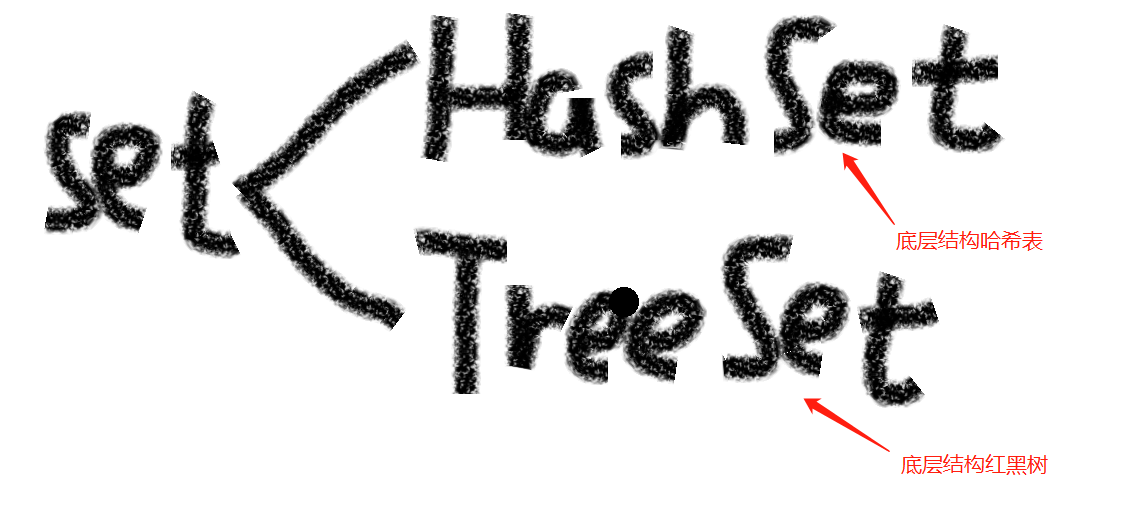
LinkedHashSet是双向链表
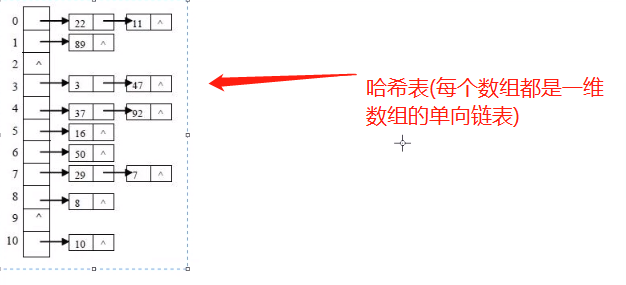
叫做链表数组
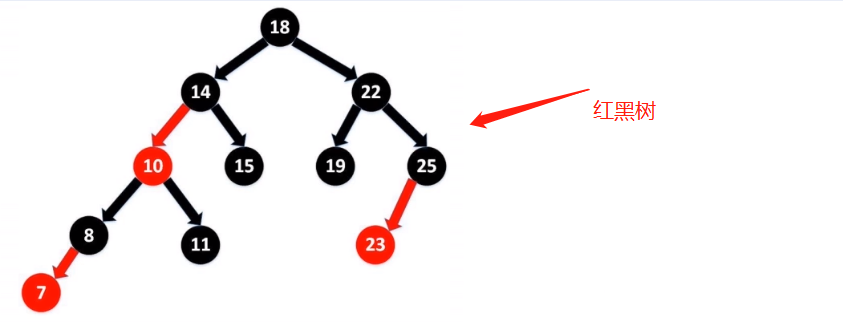

1 2 3 4 5 6 7 8 9 10 11 12 13 14 | public class HashSetTest { public static void main(String[] args) { Set<String> aSet = new HashSet<>(); aSet.add("one1"); aSet.add("one2"); aSet.add("one3"); aSet.add("one4"); aSet.add("one1"); System.out.println(aSet); }} |
打印的顺序是乱的,但是没有显示重复的数据
1 2 3 4 5 6 7 | Set<String> lSet = new LinkedHashSet<>(); lSet.add("one1"); lSet.add("one2"); lSet.add("one3"); lSet.add("one4"); lSet.add("one1"); System.out.println(lSet); |

使用linkedHashSet会依次打印放入元素的顺序
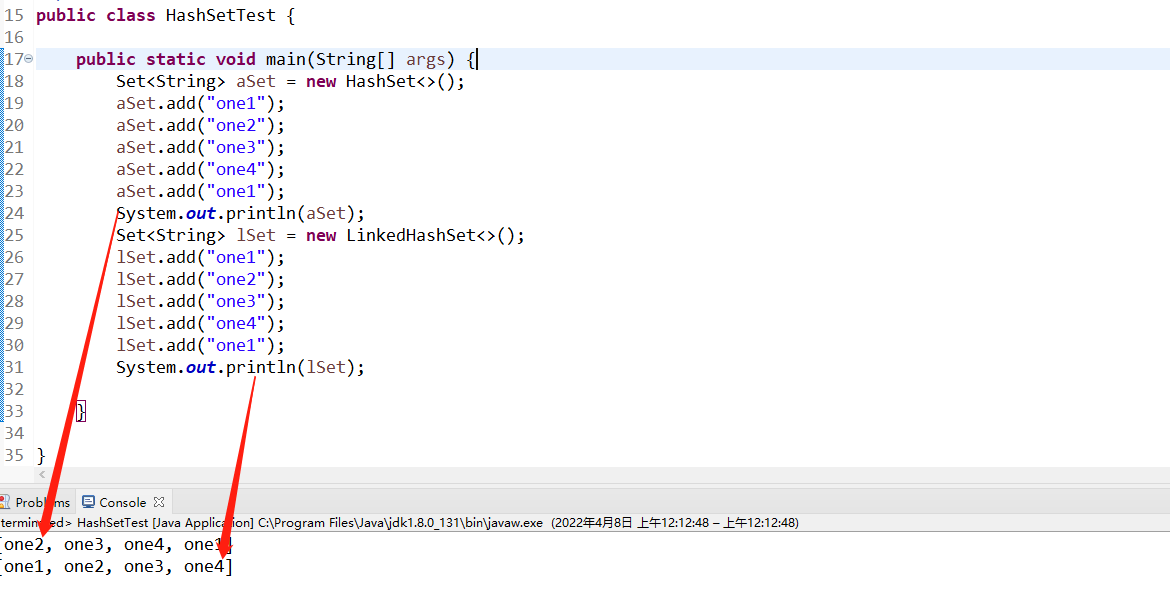
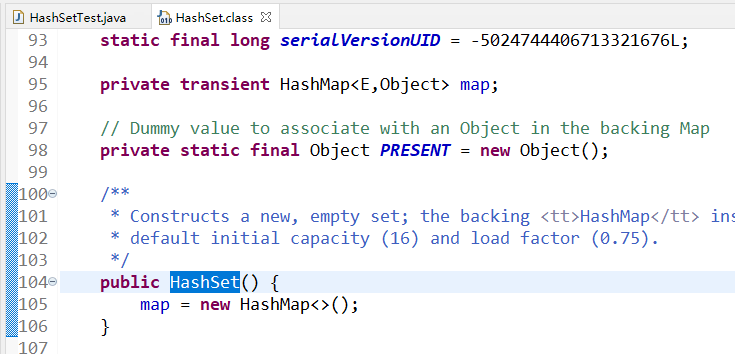
存放数据的原理

1 2 3 4 5 6 7 8 9 | 当需要新增一个数据,首先调用hashCod(),获取添加数据的哈希码值,接着调用哈希算法获取哈希值,接着去哈希表中找到索引位置当生成的索引为0时,但是0位置已经有数据了,使用新元素和22比较哈希值是否相等,不等,插入已有元素的后面相等的话,使用新元素调用equals()方法与22比较是否相等,相等则插入失败不相等,插入已有元素的后面当生成的索引是2时,直接将新元素插入索引为2的位置 |
如何剔除对象中的重复数据
1 2 3 4 5 6 7 8 9 10 11 12 13 14 15 16 17 | public class JmockitTest { @Test public void test(){ UmAndCustomerIdParam um=new UmAndCustomerIdParam(); List<UmAndCustomerIdParam> paramList=new ArrayList<UmAndCustomerIdParam>(); paramList.add(new UmAndCustomerIdParam("qiuxie002","a001")); paramList.add(new UmAndCustomerIdParam("qiuxie002","a002")); paramList.add(new UmAndCustomerIdParam("qiuxie002","a002")); paramList.add(new UmAndCustomerIdParam("qiuxie002","a002")); paramList.add(new UmAndCustomerIdParam("qiuxie002","a002")); paramList.add(new UmAndCustomerIdParam("qiuxie002","a002")); Set<String> collect = paramList.stream().map(UmAndCustomerIdParam::getOcmCustId).collect(Collectors.toSet()); System.out.println(collect); }} |
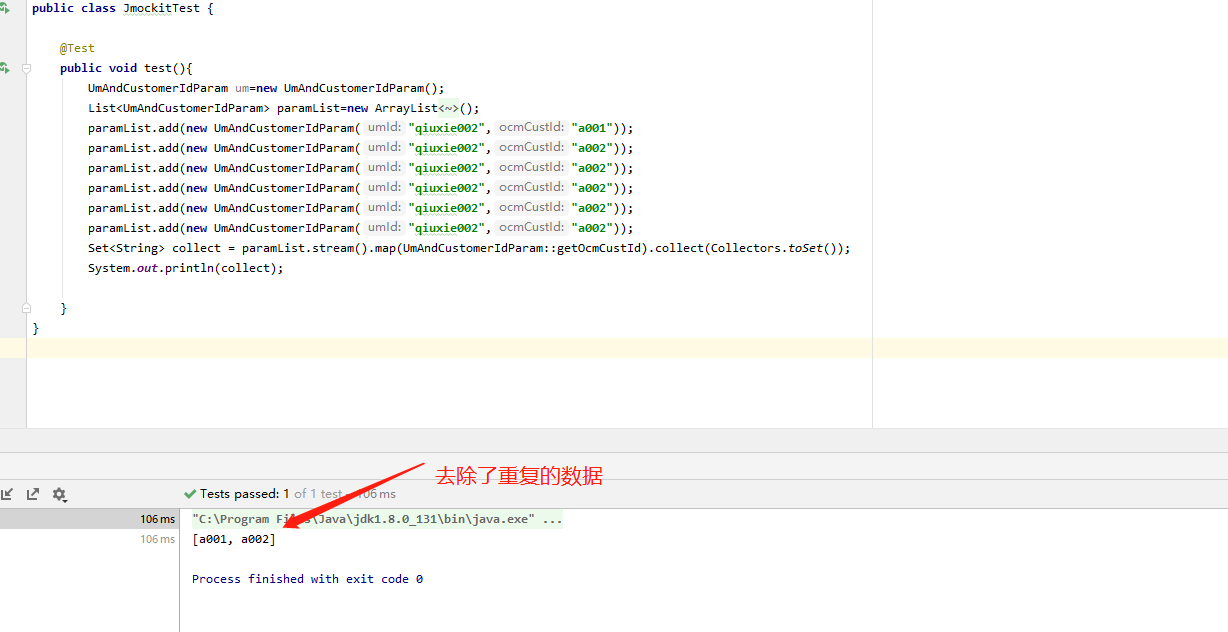
TreeSet集合底层是有序二叉树,又叫红黑树
有序二叉树的特征
1.左子树中的任意节点元素都小于根节点元素值
2.右子树中任意节点元素都大于根节点元素值
3.左子树和右子树内部都遵循上述规则
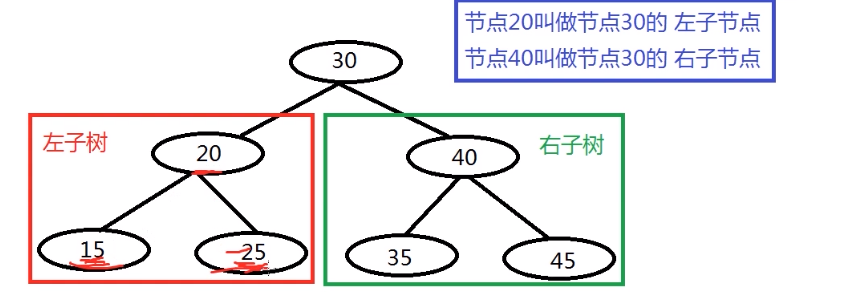
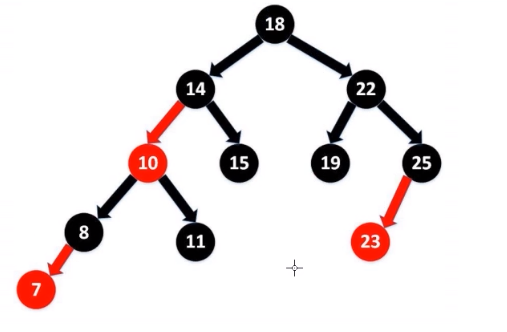
基本类型比较
1 2 3 4 5 6 7 8 9 | Set<String> aSet = new TreeSet<>(); System.out.println("第一次打印集合:" + aSet); aSet.add("2"); aSet.add("1"); aSet.add("200"); aSet.add("22"); aSet.add("42"); aSet.add("32"); System.out.println("第二次打印集合:" + aSet); |
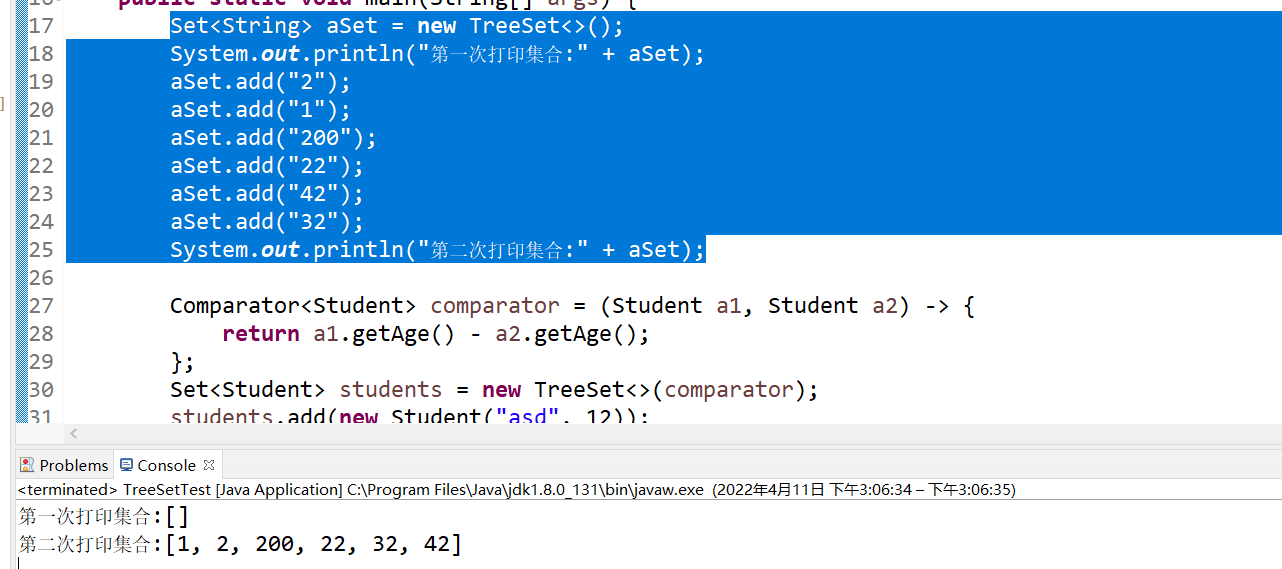
对象比较
当进行对象,直接去比较会出现下面的错误

下面给出三种形式解决问题
第一种是自然排序,实体类实现Comparable
1 2 3 4 5 6 7 8 9 10 11 12 13 14 15 16 17 18 19 20 21 22 23 24 25 26 27 28 29 30 31 32 33 34 35 36 37 38 39 40 41 42 43 44 45 46 47 48 49 50 51 52 53 54 55 56 57 58 59 60 61 62 63 64 65 66 67 68 69 70 71 72 73 74 75 76 77 78 79 80 81 82 83 84 85 86 87 88 89 90 91 92 93 94 95 96 97 98 99 100 101 | /** * */package com.java.set;/** * @author yourheart * @update 2022年4月11日 上午9:37:59 * @description: */public class Student implements Comparable<Student> { /** * 学生姓名 */ private String name; /** * 学生年龄 */ private Integer age; /** * @param name * @param age */ public Student(String name, Integer age) { super(); this.name = name; this.age = age; } /** * @return the name */ public String getName() { return name; } /** * @param name the name to set */ public void setName(String name) { this.name = name; } /** * @return the age */ public Integer getAge() { return age; } /** * @param age the age to set */ public void setAge(Integer age) { this.age = age; } @Override public String toString() { return "Student [name=" + name + ", age=" + age + "]"; } @Override public int compareTo(Student o) { return this.age - o.age; }}/** * */package com.java.set;import java.util.Set;import java.util.TreeSet;/** * @author yourheart * @update 2022年4月11日 上午9:18:22 * @description: */public class TreeSetTest { public static void main(String[] args) { Set<Student> students = new TreeSet<>(); students.add(new Student("asd", 12)); students.add(new Student("asd", 15)); students.add(new Student("asd", 52)); students.add(new Student("asd", 82)); students.add(new Student("asd", 32)); students.add(new Student("asd", 22)); System.out.println("第三次打印集合:" + students); }} |

可以看到图中的数据已经排序了
姓名相同,按照年龄比较
1 2 3 4 5 6 7 8 | @Override public int compareTo(Student o) { if (this.name.compareTo(o.name) == 0) { return this.age - o.age; } return this.name.compareTo(o.name); } |
1 2 3 4 5 6 7 8 | Set<Student> students = new TreeSet<>(); students.add(new Student("asd", 12)); students.add(new Student("asd1", 15)); students.add(new Student("asd3", 52)); students.add(new Student("asd", 82)); students.add(new Student("asd4", 32)); students.add(new Student("asd", 22)); System.out.println("第三次打印集合:" + students); |

第二种使用比较器规则比较进行排序,构建TreeSet集合时传入java.util.Comparator接口
使用内部类的方式创建比较器
1 2 3 4 5 6 7 8 9 10 11 12 13 14 15 16 17 18 19 20 | // 准备比较器对象作为参数传递给构造方法 Comparator<Student> comparator = new Comparator<Student>() { @Override public int compare(Student o1, Student o2) { return o1.getAge() - o2.getAge(); } }; Set<Student> students = new TreeSet<>(comparator); students.add(new Student("asd", 12)); students.add(new Student("asd1", 15)); students.add(new Student("asd3", 52)); students.add(new Student("asd", 82)); students.add(new Student("asd4", 32)); students.add(new Student("asd", 22)); students.forEach(a -> { System.out.println(a); }); |

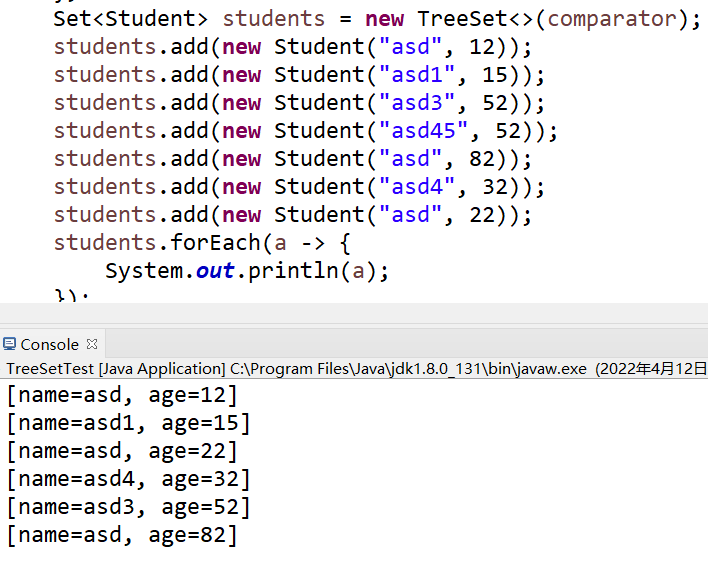
创建的比较器的优先级别大于自然排序,比较器自定义程度更高
jdk1.8开始支持lambda表达式,采用jdk1.8的特性创建构造器
使用比较器排序,引用了jdk1.8特性
1 2 3 4 5 6 7 8 9 10 11 12 13 14 | Comparator<Student> comparators = (Student a1, Student a2) -> { return a1.getAge() - a2.getAge(); }; Set<Student> students = new TreeSet<>(comparators); students.add(new Student("asd", 12)); students.add(new Student("asd1", 15)); students.add(new Student("asd3", 52)); students.add(new Student("asd45", 52)); students.add(new Student("asd", 82)); students.add(new Student("asd4", 32)); students.add(new Student("asd", 22)); students.forEach(a -> { System.out.println(a); }); |
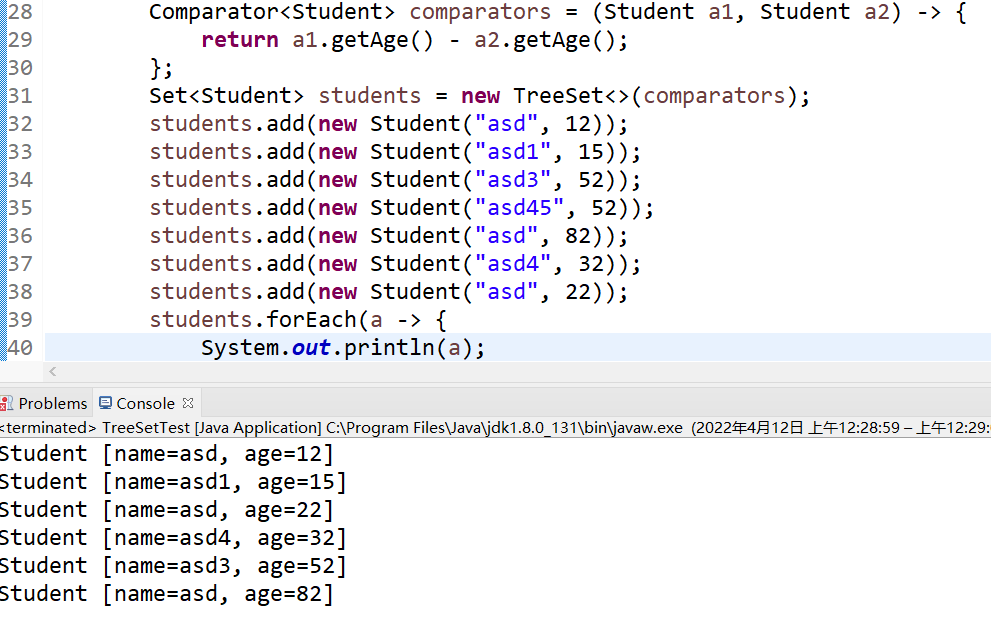





【推荐】国内首个AI IDE,深度理解中文开发场景,立即下载体验Trae
【推荐】编程新体验,更懂你的AI,立即体验豆包MarsCode编程助手
【推荐】抖音旗下AI助手豆包,你的智能百科全书,全免费不限次数
【推荐】轻量又高性能的 SSH 工具 IShell:AI 加持,快人一步
· TypeScript + Deepseek 打造卜卦网站:技术与玄学的结合
· Manus的开源复刻OpenManus初探
· AI 智能体引爆开源社区「GitHub 热点速览」
· C#/.NET/.NET Core技术前沿周刊 | 第 29 期(2025年3.1-3.9)
· 从HTTP原因短语缺失研究HTTP/2和HTTP/3的设计差异